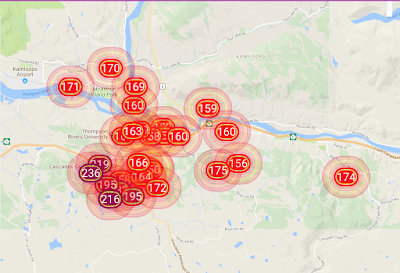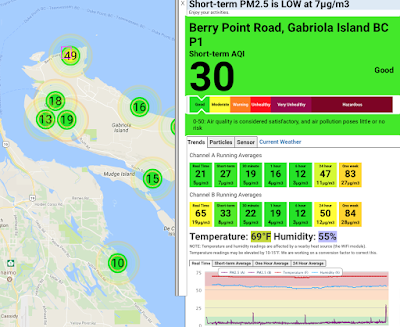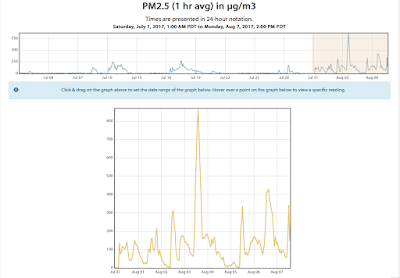How much is a human life worth? If you live in rural British Columbia or in resource-based communities like Kamloops you may be surprised to learn that your life is worth far less than someone from Vancouver or Victoria. Recent forest fires in the interior of BC, and the massive amounts of wood smoke produced, demonstrate how risk communication tools like the Air Quality Health Index (AQHI) are designed to treat differentially exposures across populations. The AQHI is a scale used in Canada to weigh the relative contribution of three air pollutants; namely, particulate matter in the 2.5 micron range (PM2.5), ground level ozone, and nitrogen dioxide. It normally ranges between 1-10 or from “low” to “very high” health risk but can reach numbers like 49 as was recorded on August 3, 2017, in Kamloops. The formula used for calculating the AQHI is straightforward and it involves using a three-hour average for these pollutants in micrograms/m 3 for PM2.5, and parts-per-billion (


